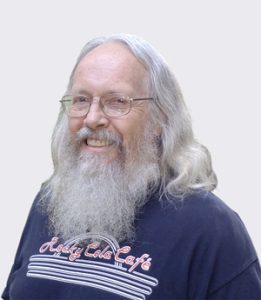The Lost Community of Oakdale
Many of the neighborhoods in the Crescenta Valley have retained the names given them by developers when streets were laid out and lots divided. Some of the names became permanent and others faded into obscurity. La Crescenta was the name of a subdivision laid out by Benjamin Briggs in the late 1800s, and Montrose was a development name from when it was laid out in 1913. The name La Crescenta stuck as it had a post office named for it and the name Montrose survived due to its business district. Verdugo City is lesser known but still has a post office and even a sign on the freeway. The development name Sparr Heights has somehow hung on as a neighborhood name, while Highway Highlands has not, being now known only to a handful of residents. Some neighborhoods have retained their names because they have signs in front of their entrances, the most well-known being Whiting Woods followed by Oakmont Woods and Glenwood Oaks.

president of the Historical Society
of the Crescenta Valley and loves local history. Reach him at
lawlerdad@yahoo.com.
But one name has completely disappeared, so much so that when the name came up a couple of years ago most local historians were left scratching their heads. The name was Oakdale, or its full name Oakdale Little Ranches.
It first appeared in 1913 and faded away before the beginning of the 1920s. It was the brainchild of Robert Walton, the developer who founded Montrose (Waltonia Drive is named for him). The larger Montrose development (250 acres) seems to have been oriented to businesses and private homes whereas Oakdale Little Ranches were larger lots, the emphasis being on poultry production and small farms. The initial Oakdale development was much smaller than Montrose, only comprising 28 acres total. The two developments seem tied to each other – Montrose opening in February 1913 and Oakdale just a few months later in October 1913.
And where was Oakdale? That’s a little fuzzy but it appears to have been just to the west of Montrose, maybe between Rosemont and La Crescenta avenues, and along Honolulu Avenue.
It opened on Oct. 19, 1913 with the same flair as the Montrose opening a few months earlier. A big ad showed a picture of an idealized home on the ¼-acre lot with a large Craftsman-style house, a tennis court, and extensive crops and henhouses along with a few magnificent oak trees. The text advertised an ideal climate, deep rich soil, green hills and stunning mountains, comparable to the Swiss Alps. It was close to the trolley line (which ran along Montrose Avenue), situated high above Glendale and next to aristocratic (?) Montrose. Lots were selling for $250 to $450; at $50 down and $10 a month, it was ideal for a country home or a money-making ranch. Don Jose Romero served a free barbecue, just as he had done at the opening of Montrose. After that the guests were entertained by live music while local farmers handed out wagonfuls of free grapes and peaches.
News articles reported that 1,000 people showed up and half the lots were sold the first day. It was expected that the rest would sell the next week (so you’d better hurry!). The next year another tract of Oakdale was opened, along with the report that property owners from the first sale had come by the tract office to show a 36-pound watermelon they had grown on their little Oakdale ranch along with some three-pound potatoes and 16-ounce peaches. Finally, we see a last tract opened in March 1915, again with a free barbecue. This time half and full acre lots were offered in “Oakdale Acres.”
And that was the last we hear of Oakdale. It was forgotten and Robert Walton moved on to develop other areas. Before he left, he was presented with a large silver loving cup trophy engraved with the words: “Presented to Robert A. Walton by the Citizens of La Crescenta, Oakdale and Montrose as a token of their appreciation of his services. July 15, 1915.” That cup is displayed at the La Crescenta Library and it’s probably the only reference you’ll ever see to the lost neighborhood of Oakdale.
